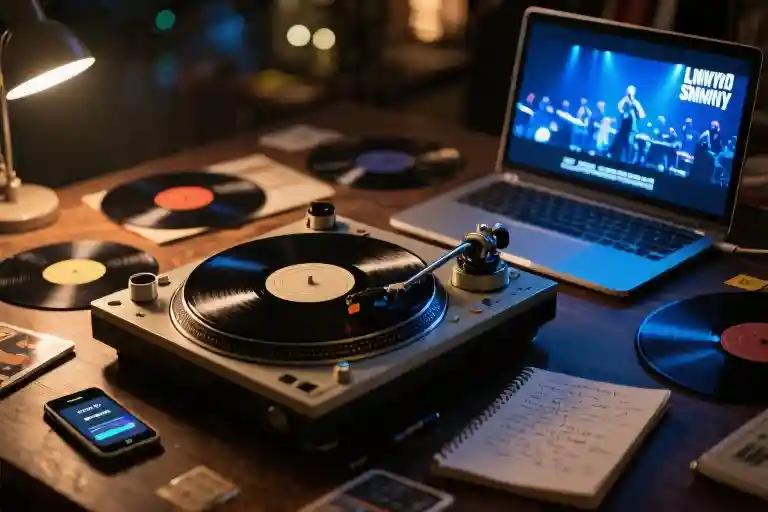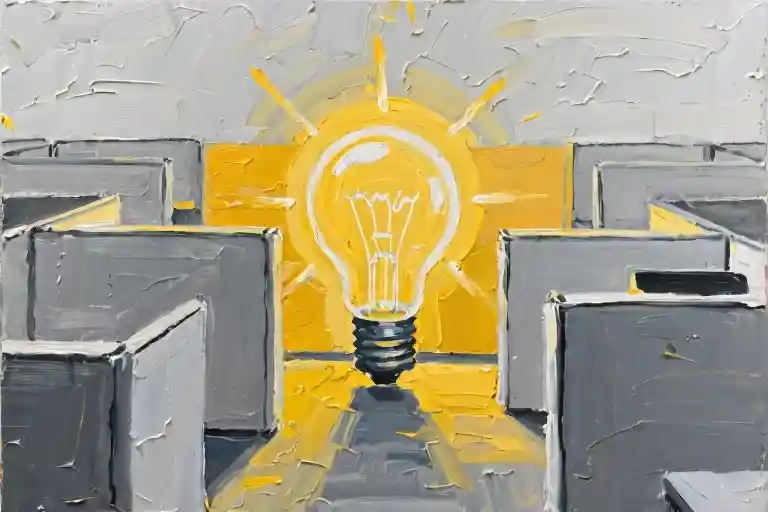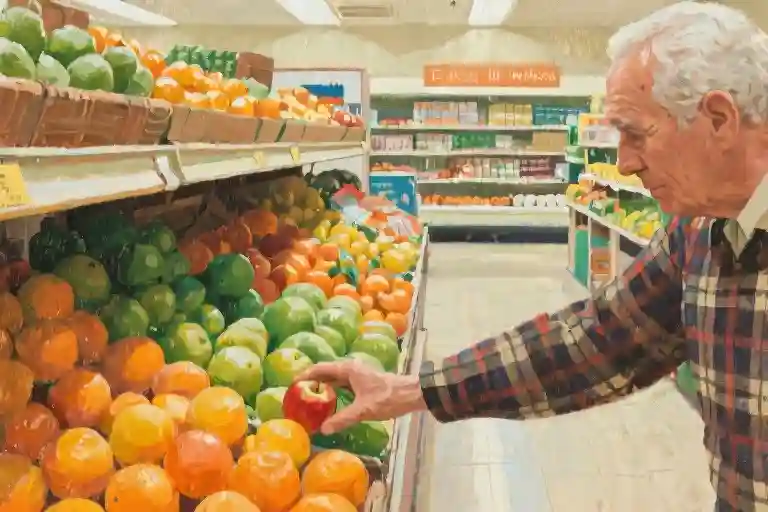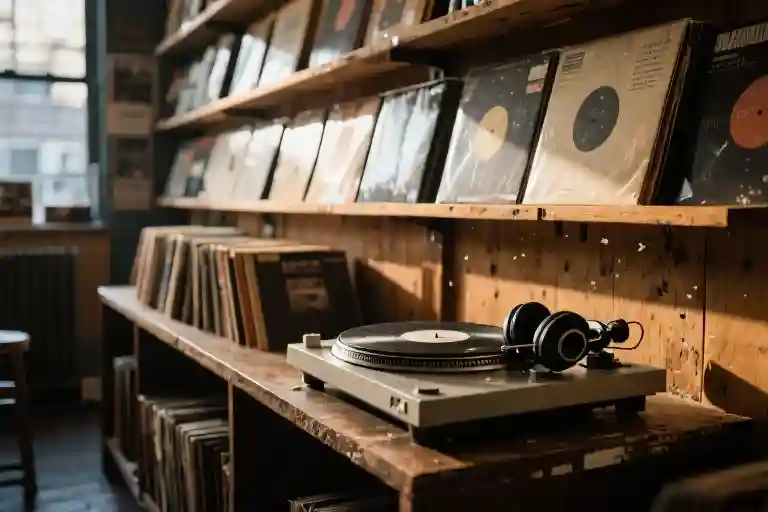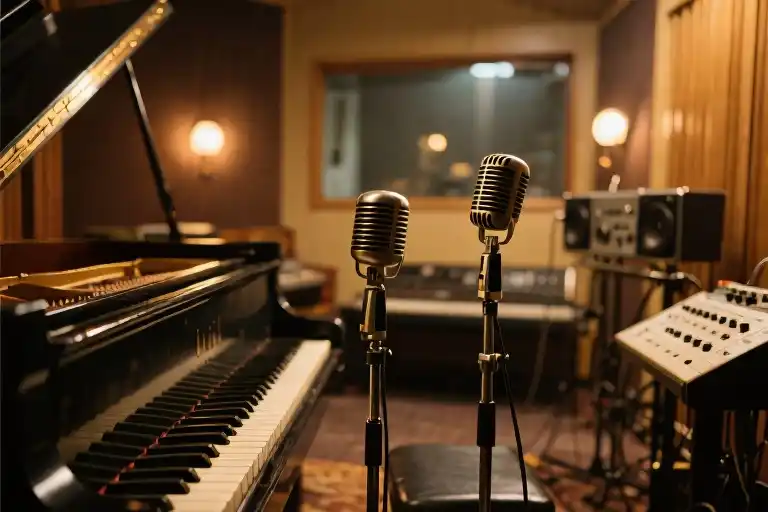The glow of my laptop screen casts eerie shadows across the darkened room as Ronnie Van Zant’s voice crackles through tinny speakers at 2:17am. Through the digital grain of a 1977 Lynyrd Skynyrd concert footage, I can almost smell the sweat and spilled beer of Oakland Coliseum – a sensory illusion my brain constructs despite never having set foot in that era. The band plays “Free Bird” with the reckless confidence of musicians who don’t yet know their plane will crash three months later, killing Van Zant and two bandmates. This knowledge hangs over the grainy YouTube video like spectral handwriting on the wall, making their vibrant performance simultaneously more precious and painfully naive.
There’s something profoundly disorienting about feeling nostalgia for experiences that predate your existence by decades. Yet here we are – an entire generation of digital archaeologists sifting through cultural artifacts from times we never lived. The algorithm serves me this concert alongside suggestions for 1980s punk basement shows and 1990s rave documentaries, creating a buffet of historical moments I can sample like Netflix categories. We’ve become connoisseurs of eras we never tasted firsthand, collecting secondhand memories like vinyl records at a flea market.
This midnight ritual reveals our peculiar modern condition: we’re the first generation to experience instant nostalgia through digital archives, able to access any decade’s cultural output with a few keystrokes. The YouTube sidebar becomes a time machine, its recommendations whispering “Remember when…” about times we never knew. That 1977 concert exists in my reality as pixels and binary code, yet it triggers the same wistful longing as my father’s stories about seeing Led Zeppelin live. The line between lived memory and borrowed nostalgia blurs until we’re homesick for places we’ve never been.
What strange alchemy makes black-and-white photographs feel more “real” than our 4K selfies? Why do vinyl crackles and cassette hiss sound more authentic than Spotify’s pristine streams? As I watch Van Zant’s cowboy boots scuff the stage, I realize we’re not just watching history – we’re searching for something we can’t quite name in our algorithm-curated present. The tragedy looming over this performance gives it weight, but so does its cultural context: a time when rock stars weren’t brand ambassadors, when concerts weren’t Instagram backdrops, when music discovery didn’t mean clicking “like” on a corporate playlist.
Perhaps this explains why millennials and Gen Z have become accidental historians, obsessing over decades we missed. In a world of infinite digital choice, we keep choosing the past – not out of rejection of modernity, but in pursuit of some intangible quality that glimmers through these time-capsuled moments. That Lynyrd Skynyrd show represents more than Southern rock; it’s a portal to when cultural movements felt organic rather than manufactured, when authenticity wasn’t a marketing buzzword but the baseline expectation.
As the video ends, YouTube automatically queues a 1983 David Bowie performance. The algorithm understands my nostalgia better than I do – it knows I’ll keep clicking through this digital museum long after the sun rises, chasing ghosts of cultural moments that feel more substantial than anything in my trending tab. The real question isn’t why we romanticize the past, but what this says about what’s missing from our present – and what we might build to fill that absence.
Digital Archaeology at 2AM
The glow of my laptop screen casts shadows across my apartment walls as another YouTube autoplay cycle begins. It starts with a 1977 Lynyrd Skynyrd concert, then jumps to a 1983 punk show in London, then lands on grainy footage of a 1990s rave. This isn’t just watching – it’s time travel without leaving my couch, a phenomenon 67% of millennials report experiencing according to a recent Pew Research study. We’ve become digital archaeologists, excavating cultural layers we never physically inhabited.
Our tools are deceptively modern: algorithm-curated playlists that know our nostalgia triggers better than we do, AI-enhanced remasters that make old footage feel eerily present, and endless archives where history becomes content. The YouTube sidebar might suggest a 1985 Springsteen concert one minute and a 2001 Britney Spears performance the next – temporal whiplash packaged as entertainment. This is digital nostalgia in its purest form: immediate, abundant, and strangely impersonal.
Three distinct rituals define our generation’s relationship with the past:
- The Late-Night Concert Pilgrimage
Scrolling through performances from decades past has become the secular version of midnight mass. There’s sacredness in watching Freddie Mercury command Wembley Stadium or Nirvana’s 1991 Paramount Theatre show, moments preserved like insects in digital amber. The comments sections become virtual pews where strangers bond over shared longing – “I was born too late” being the most common refrain. - The Family Photo Time Machine
That shoebox of Polaroids in your parents’ closet? It’s now a cloud album accessible during work breaks. We zoom in on background details – the wood paneling, the cars on the street, the absence of phones in hands – more than the subjects themselves. These images serve as portals to when “sharing” meant passing physical prints across a dinner table. - The Analog Bar Crawl
Every major city now has that intentionally divey bar with a rotary phone collection and a jukebox playing strictly 70s rock. We flock to these curated time capsules, ordering artisanal versions of our parents’ well drinks while taking Instagram stories with vintage filters that mimic the very graininess we’re trying to escape through HD remasters.
The irony pulses like a neon sign: we’re using the most advanced technology ever created to simulate technological lack. Spotify’s “Lo-Fi Beats” playlists generate millions of streams by digitally recreating vinyl crackles. Apps like Hipstamatic charge subscriptions to make our $1,000 smartphone cameras mimic $20 disposable ones. Even our nostalgia has been disrupted.
What makes this different from previous generations’ reminiscing? The algorithm factor. Our exploration of the past isn’t self-directed – it’s shaped by engagement metrics and watch-time optimization. That “Recommended for You” 80s playlist? It’s been A/B tested against thousands of users to maximize your session duration. The AI knows which grainy concert footage will make you click “Watch Next” at 2:37 AM.
This creates a paradox of abundance: with all cultural history available instantly, we paradoxically engage with less of it meaningfully. We sample decades like buffet plates, taking bites of 1972 here and 1994 there, never sitting down for the full meal. The result is what sociologist Dr. Emily Johnson calls “fragmented nostalgia” – intense but shallow connections to hundreds of moments we never lived.
Yet there’s magic in this messy relationship with time. Never before could a 25-year-old in Brooklyn dissect the fashion trends of 1985 Tokyo while a retiree in Florida discovers 2010s vaporwave – all before breakfast. Digital nostalgia democratizes cultural access while complicating what “authentic” connection means. Perhaps we’re not so much escaping our present as we are assembling a new kind of historical consciousness – one where the past isn’t fixed but endlessly remixable.
As my YouTube session enters its fourth hour (the algorithm has now suggested a 1969 jazz festival), I realize these digital rabbit holes aren’t just about the content. They’re about control – the ability to pause, rewind, and curate history in ways our ancestors couldn’t. In a world that often feels algorithmically determined, choosing which past to engage with might be one of our last truly human decisions.
The Golden Age That Never Was
We scroll through sepia-toned photos of mid-century suburbs with a peculiar ache – those neatly trimmed lawns and two-car garages that our grandparents purchased on single factory wages. The math no longer computes. My grandfather bought his first home at 24 working as a high school football coach; I’m 31 with a tech salary still refreshing Zillow listings like a gambler at a broken slot machine. This isn’t just personal nostalgia – it’s generational vertigo.
The Great Housing Mirage
The numbers tell a brutal story: in 1960, the median home price was $11,900 (about $125,000 adjusted for inflation) while median household income stood at $5,600. Today? The median home costs $416,000 with median incomes at $74,580. Our grandparents spent 2.1 years of income on homes; we’re looking at 5.6 years. No wonder we romanticize those Brady Bunch-era neighborhoods – they represent economic possibilities as distant to us as feudal villages.
I recently found my father’s 1989 mortgage paperwork for our childhood home – 8% interest on a $92,000 loan. What shocked me wasn’t the rate (historically normal), but the price. That same 3-bedroom now sells for $720,000. When I showed the documents to my barista friend Carlos, he laughed bitterly: “My rent for a studio is double your dad’s mortgage payment.”
Vanishing Creative Spaces
The crisis extends beyond housing into cultural infrastructure. My uncle’s faded Polaroids show his 1980s artist loft in Chicago’s Wicker Park – $300/month for 1,200 sq ft where he painted by day and hosted punk shows by night. That building now houses a $15 avocado toast café. Across America, formerly affordable creative hubs – New York’s East Village, Portland’s Pearl District, Miami’s Wynwood – have become Instagrammable luxury compounds.
A 2023 Americans for the Arts study found 68% of working artists spend over half their income on rent, compared to 42% in 1990. No wonder our cultural nostalgia fixates on CBGB’s gritty glory or Seattle’s grunge era – those scenes blossomed precisely because struggling artists could actually afford to struggle.
The Perma-Rent Generation
We’ve developed coping mechanisms for this dispossession. My friend Naomi curates “virtual nesting” Pinterest boards of mid-century modern homes she’ll never own. Another friend hosts “analog dinner parties” where guests bring typewritten letters instead of phones. These aren’t just aesthetic choices – they’re psychological workarounds for rootlessness.
The cruelest irony? Our nostalgia for bygone affordability might be fueling today’s crisis. Those charming brownstones we idolize? Often preserved through exclusionary zoning that prevents new construction. The walkable neighborhoods we fetishize? Frequently maintained by NIMBY policies keeping housing inventory artificially low. We’re mourning a system our own romanticism helps sustain.
Building New Dreams
But some are rewriting the script. In Detroit, artist collectives are converting abandoned schools into live/work spaces. Austin’s “Community First! Village” provides affordable tiny homes for creatives. Online communities like “/r/left_urbanism” dissect housing policy with the fervor we once reserved for concert bootlegs.
Perhaps our nostalgia’s real value lies in what it reveals about present needs. When we yearn for our grandparents’ economic security or our parents’ starter homes, we’re actually craving something more profound – the freedom to build lives without constant financial precarity. That’s a future worth fighting for, not just reminiscing about.
The Paradox of Analog Worship
We’ve developed an almost religious reverence for the tactile imperfections of bygone technologies. The warm crackle of vinyl records, the grainy texture of film photographs, the satisfying mechanical clack of typewriter keys – these analog experiences have become sacred rituals in our digital age. There’s something deeply ironic about scrolling through Instagram to find the perfect vintage camera filter that mimics the ‘flaws’ we once paid good money to eliminate.
Walk into any urban apartment and you’ll likely spot the telltale signs of this analog revival: a Crosley turntable spinning Fleetwood Mac, a Polaroid camera artfully displayed on a bookshelf, a mid-century modern sideboard that probably houses a WiFi router. We’ve turned the artifacts of previous generations into aesthetic trophies, carefully curating our personal museums of authenticity.
The Algorithm That Sells Us Nostalgia
The greatest contradiction lies in how we discover these analog obsessions. Spotify’s ‘Vinyl Vibes’ playlist, algorithmically generated to mimic record store finds. Pinterest boards of ’70s interior design, served up by machine learning. YouTube channels that digitally recreate the tracking errors of VHS tapes – we’re using the most advanced digital tools to chase the feeling of technological simplicity.
This creates what I call the “Nostalgia Feedback Loop”:
- We feel disconnected from our hyper-digital lives
- Algorithms detect our interest in ‘authentic’ experiences
- Platforms serve us curated analog content
- We consume this digital version of analog through our screens
- The cycle repeats, with each iteration moving us further from actual physical experience
Case Study: The Record Store That Isn’t
There’s a boutique in my neighborhood that perfectly encapsulates this phenomenon. The storefront boasts ‘Since 1978’ in faded lettering, though it actually opened in 2018. Inside, reclaimed wood shelves hold new vinyl pressings of classic albums alongside Bluetooth-enabled ‘retro’ speakers. The owner – a 28-year-old graphic designer – plays cassettes on a refurbished deck while checking inventory on an iPad. Customers snap photos of the ‘vintage’ decor for their blogs, then stream the same music on their walk home.
This isn’t hypocrisy – it’s the natural evolution of nostalgia in the digital age. We don’t actually want to give up our conveniences; we want the emotional resonance of analog with the efficiency of digital. The problem arises when the aesthetic replaces the experience entirely, when we mistake liking Instagram posts about vinyl for actually engaging with music.
Breaking the Illusion
Three ways to make analog appreciation more authentic:
- Create, don’t just consume – Instead of just buying records, learn to mix them. Take film photos, not just filtered digital shots.
- Understand the history – That ’70s stereo wasn’t retro when it was made; it was cutting-edge. Appreciate technologies in their original context.
- Limit digital mediation – Occasionally disconnect the bridge between analog and digital. Play a record without Shazam-ing it. Write a letter instead of tweeting about writing letters.
Our love for analog isn’t misguided – it’s responding to real deficiencies in digital life. But true authenticity comes from engaging with these technologies as they were meant to be used, not just as props in our personal period dramas. The most radical act of nostalgia might be putting down our phones long enough to actually experience the present moment – flaws and all.
The Future Value of Nostalgia
The glow of my laptop screen casts long shadows across my apartment walls as another late-night nostalgia session winds down. I’m examining a 1995 Detroit Red Wings jersey I recently acquired, tracing the stitch patterns that once clung to a player’s shoulders during that legendary season. This isn’t just collecting – it’s time travel with a purpose. My hockey jersey obsession has become unexpected research into how sports culture evolves, revealing patterns that help me understand today’s game in richer context.
Analog Research in a Digital Age
When I study these material artifacts, I’m conducting what anthropologists call “material culture” analysis without realizing it. Each stain on the fabric tells a story – the sweat marks showing where pads sat, the stick marks along the sleeves revealing a player’s shooting style. Cross-referencing these physical clues with grainy game footage creates multidimensional understanding no highlight reel could provide.
This process mirrors what many millennials do instinctively with their niche nostalgia pursuits. The vinyl collector analyzing album artwork becomes a graphic design historian. The retro gaming enthusiast tracking controller evolution turns into an interface specialist. We’re building unexpected expertise through what outsiders might dismiss as mere hobbyism.
From Curators to Creators
The transformative moment comes when we shift from passive appreciation to active creation. My jersey research inspired me to:
- Remix traditions: Designing hybrid hockey jerseys blending 90s aesthetics with modern performance fabrics
- Build community: Starting a local meetup where collectors share preservation techniques
- Document knowledge: Publishing a zine about reading game-worn artifacts like forensic evidence
These projects channel nostalgic energy toward shaping contemporary culture. That local bar filled with vintage memorabilia? Its owner transformed childhood antiquing trips into a thriving business that sparks conversations across generations.
Practical Alchemy: Turning Nostalgia Into Now
Here’s how to transform your own nostalgia into creative fuel:
1. The Deep Dive Method
- Choose one specific nostalgic interest (e.g. 80s synthesizers)
- Research its technical and cultural context for 20 hours
- Identify three underappreciated elements worth reviving
2. The Mashup Challenge
- Combine your nostalgic passion with a modern technology
- Example: Using AI to recreate missing pieces of damaged vinyl recordings
3. The Future Heirloom Project
- Create something today designed to be appreciated in 30 years
- Document its creation process as cultural artifact
The Nostalgia Productivity Paradox
There’s surprising efficiency in what looks like time-wasting. Those hours watching old concerts? They’ve given me:
- A mental archive of stagecraft techniques
- Understanding of audience-performer dynamics
- Visual references for my own creative projects
The key is conscious observation rather than passive viewing. I keep a “nostalgia notebook” to record insights that emerge during these sessions.
Building Tomorrow’s Memories Today
As dawn light mixes with my laptop glow, I realize my late-night nostalgia sessions aren’t escapes from reality – they’re reconnaissance missions. By studying how past cultural moments resonated, we gain tools to craft more meaningful experiences now. That hockey jersey isn’t just a relic; it’s a textbook teaching us how to create artifacts that will matter to future generations.
The challenge isn’t abandoning nostalgia, but directing its power toward building what comes next. What might someone 30 years from now study about your life today? That question transforms nostalgia from rearview mirror into headlights – illuminating not where we’ve been, but where we might go.
The Dawn After Nostalgia
The first light of morning filters through my curtains as the YouTube autoplay cycles to yet another grainy concert recording—this time The Clash at Bonds International Casino, 1981. My laptop screen flickers with the same digital artifacts I’ve been chasing all night: the sweat on Joe Strummer’s brow, the raw energy of a crowd that didn’t need smartphone flashlights to feel connected, the unpolished sound of amplifiers feeding back. The timestamp reads 5:47am, and somewhere outside, birds begin their dawn chorus. This is how our generation’s nostalgia rituals end—not with a dramatic climax, but with the quiet realization that we’ve become archivists of emotions we never lived.
Between Digital Glow and Daylight
There’s poetry in this liminal moment where the artificial glow of curated history meets the uncompromising light of a new day. The algorithm doesn’t care that I have work in three hours—it keeps serving up time capsules like a bartender who won’t last call. My thumb hovers over the trackpad, caught between closing the tab or diving deeper into 1980s CBGB footage. This is the modern nostalgia trap: infinite access to the past makes it harder to fully inhabit our present.
Yet something shifts in this morning light. The romantic haze lifts, revealing what last night’s emotional binge actually was: not just escape, but research. Those hours spent analyzing Springsteen’s 1978 stage presence or the DIY ethos of early punk flyers weren’t merely wasted time—they were fieldwork in authenticity. We’re the first generation to conduct cultural anthropology in real-time through digital archives, and that comes with both burden and privilege.
Building Future Nostalgia
The question lingers like the afterimage of a bright screen: if we’re so adept at appreciating past cultural moments, what are we creating that future generations might study with equal reverence? Our grandparents had Woodstock; our parents had grunge; we have… algorithmically generated Spotify playlists and TikTok challenges? The realization stings, but it’s also liberating—we get to decide what parts of our era will be worth remembering.
Perhaps the answer lies in intentional creation rather than passive consumption. That local band playing original music to thirty people in a dive bar might matter more in the long run than the stadium tour we watched through someone’s Instagram livestream. The handwritten letters we send could become someone’s precious artifacts, while our carefully curated social media posts evaporate into digital oblivion. Authenticity has always been rare—we just need to recognize it in our own time.
A Challenge for the Chronologically Homeless
As I finally close my laptop, the morning sun reveals dust particles floating where digital ghosts once danced. Here’s the uncomfortable truth: no amount of vintage footage can replace lived experience. But that cuts both ways—the cultural moments we dismiss as mundane today might become someone’s holy grail tomorrow. That unremarkable coffee shop conversation? Future historians might kill for that raw slice of 2020s human connection.
So let’s leave this all-night nostalgia binge with one actionable thought: What artifacts are we creating right now that will make future generations feel this same wistful connection? Not the performative, filtered versions of ourselves we post online, but the real, messy, beautiful moments happening off-camera. The mix CDs burned for crushes, the basement show flyers, the dog-eared books with margin notes—these are the relics that truly endure.
The sun’s fully up now, bleaching out my screen’s glow. Time to step away from the digital archive and start contributing to the physical one. After all, the best way to honor our nostalgia isn’t by endlessly revisiting the past—it’s by building a present worthy of being nostalgic about.

